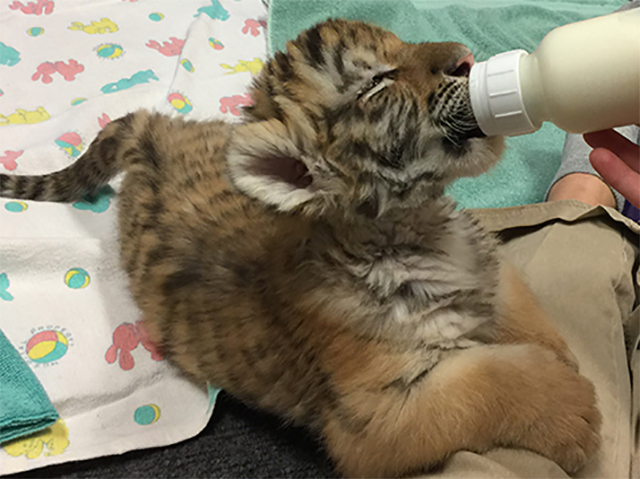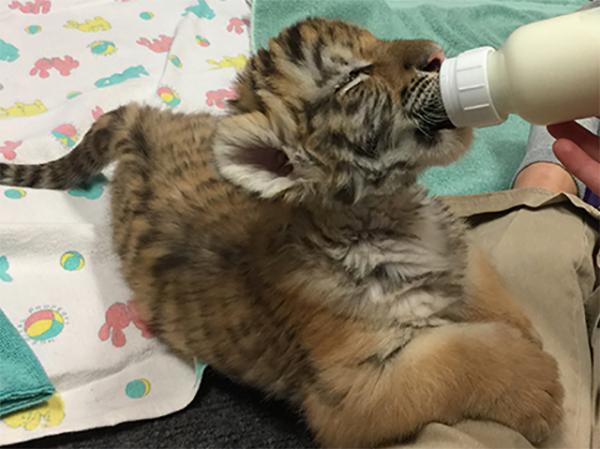KID REPORTERS’ NOTEBOOK
Hand-Raising Kash


Kash, an Amur tiger cub, is bottle-fed at the Milwaukee County Zoo after developing an infection.
His name is Kashtan, which means chestnut in Russian. But they call him Kash for short. The Amur tiger cub and his three sisters were born in September at the Milwaukee County Zoo in Wisconsin.
A month after the cubs’ birth, Kash developed an infection, as did one of his sisters, who died. Kash was sent to the zoo’s hospital for about two weeks. “That’s a little too long for him to be put back with his mother,” said Katie Kuhn, area supervisor of Big Cat Country at the zoo.
Initially, Kuhn and the other keepers were concerned that Kash’s mother, Amba, might not allow him to be removed each day for feedings that would keep him alive. Later, they feared that Amba would reject Kash since he had been sick.
To keep Kash alive, the keepers hand-fed him nutrients that his mother otherwise would have provided. Amur tigers are endangered, so helping to keep Kash alive is particularly important.
The keepers spent 16 hours a day with Kash, feeding him six bottles each day. He now eats horse meatballs and is able to spend time with his surviving sisters, Eloise and Bernadette. He is learning how to hunt and socialize. “He needs to learn when another tiger is telling him to back off,” Kuhn said.
I asked Kuhn if Kash has a favorite toy. He likes boat buoys, she said, “because they’re soft, and it’s like he’s killing a prey.”
GROWING UP
Many people might think that Kash and his sisters look like puppies. But Kuhn says, “They’re definitely not puppies. A bite from one of these guys, even at 4 months old, would probably send me to the hospital.”
Will there come a time when the zookeepers will have to stop hand-feeding Kash?
“Oh, for sure,” Kuhn said. “We’re playing it day by day. We usually stop going in with [normal tiger cubs] when they’re about 3 months old. Because we’ve been with Kash for so long, we still feel comfortable going into the enclosure.”
That may not last long. “With each passing day,” Kuhn said, “we’re definitely cutting back our presence with him.”
